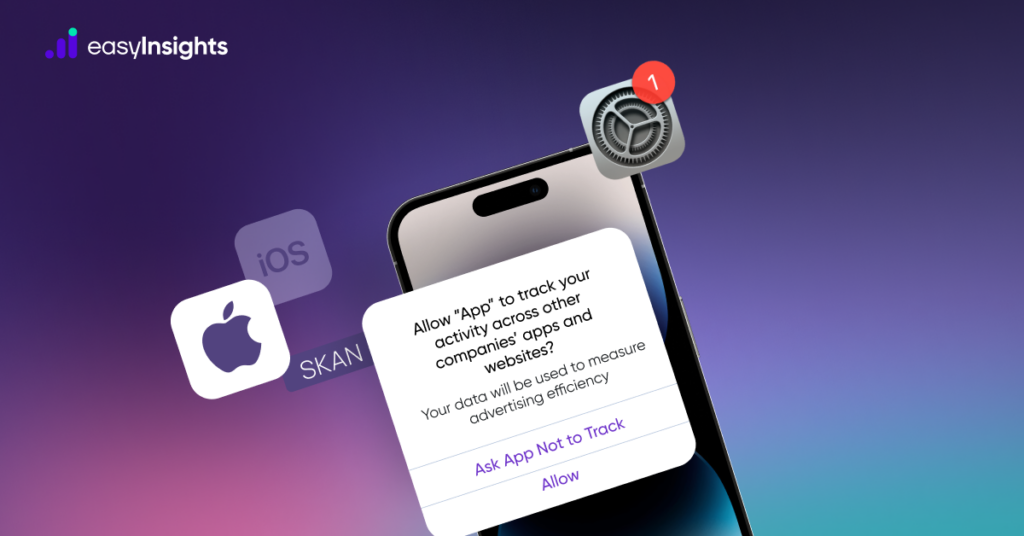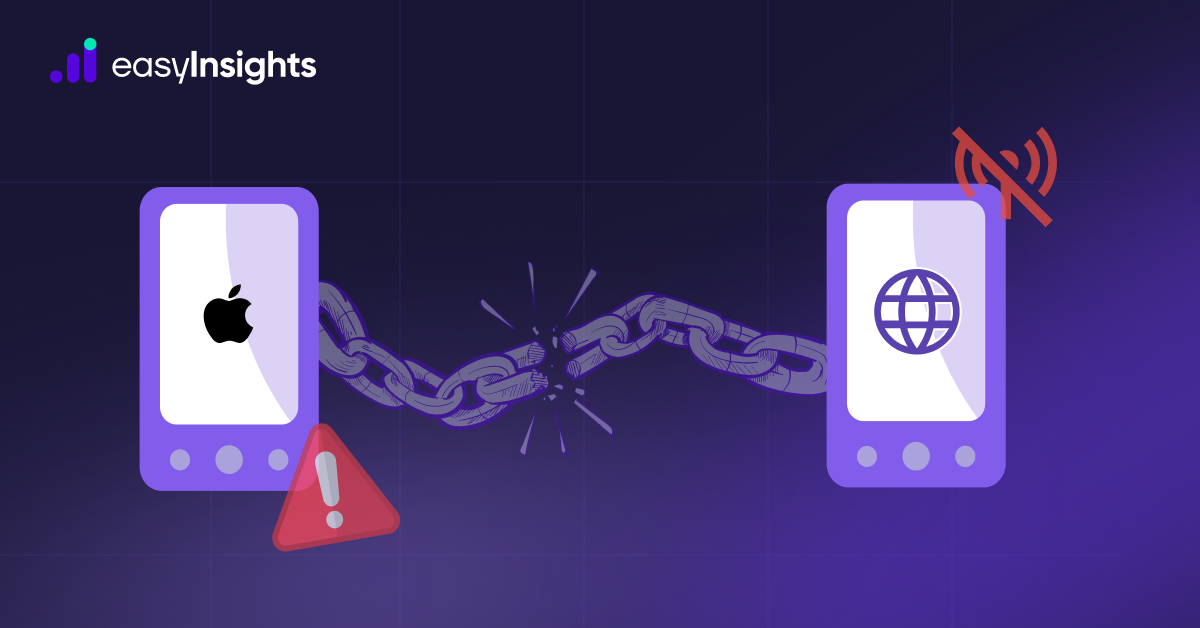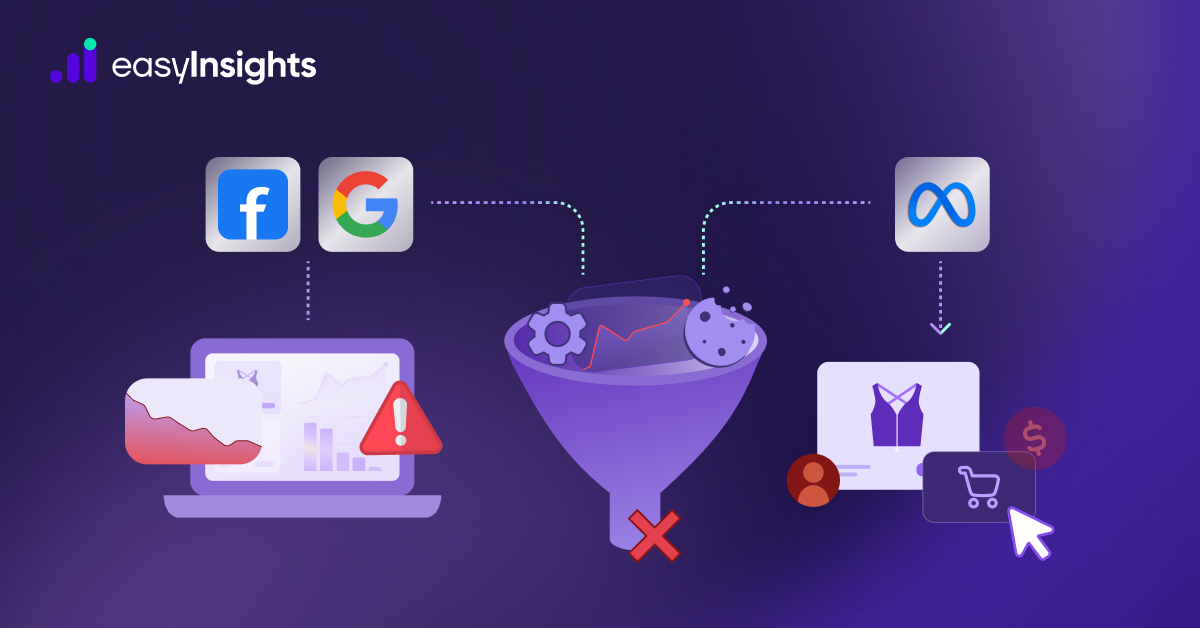
It’s no exaggeration to say that Apple’s privacy changes completely upended the digital marketing industry.
Once, advertisers could track every click, install, and purchase across apps. Campaigns optimized in real time, and every dollar spent could be traced to a specific user.
Then came App Tracking Transparency (ATT), the loss of the IDFA, and SKAdNetwork (SKAN) – a privacy-first framework that changed how attribution works on iOS.
The result?
– Targeting precision collapsed.
– ROAS (Return on Ad Spend) plummeted.
– Optimization became guesswork.
Let’s unpack exactly what happened – and why.
Jump ahead to:
1. The Death of User-Level Tracking (IDFA Loss)
Before 2021, Apple’s Identifier for Advertisers (IDFA) was the foundation of mobile marketing.
It allowed ad platforms like Facebook, Google, and TikTok to:
- Track users across apps and websites
- Attribute installs and purchases accurately
- Build lookalike audiences for high-value users
- Run retargeting campaigns based on past behavior
When Apple introduced App Tracking Transparency (ATT) in iOS 14.5, users were prompted to opt in to tracking.
Only about 15–20% of users said yes. That single policy change destroyed the visibility marketers relied on.
Immediate impact:
- Audience pools shrank overnight
- Retargeting nearly vanished
- Algorithmic targeting accuracy collapsed
- Attribution data became incomplete
The digital marketing machine; fueled by deterministic user data, suddenly ran out of gas.
Additional read: How to use server side tracking for better conversion tracking
2.The Rise of SKAdNetwork: Privacy Over Precision
To fill the measurement gap left by IDFA, Apple introduced SKAdNetwork (SKAN) – a privacy-preserving attribution framework.
Here’s the catch:
SKAN doesn’t report on individual users. It sends aggregated, anonymized “postbacks” summarizing installs and limited engagement data.
Sounds good for privacy.
Not so great for performance marketers.
Key SKAN limitations:
- No real-time or user-level data
- Postbacks delayed up to 48 hours
- Only 6 bits (values 0-63) available for conversion tracking
- Strict privacy thresholds (small campaigns get zero data)
So instead of knowing who converted, advertisers only know that someone did.
This made optimizing campaigns – especially for high-value events like purchases – much harder.
Result: ROAS fell sharply, and attribution became a black box.
What That Line Means
“So instead of knowing who converted, advertisers only know that someone did.”
In traditional (pre-ATT) marketing, advertisers could track exactly which user performed a desired action – for example:
– User ID 123 clicked an ad on Instagram
– Three days later, they made a $50 purchase
– That same user installed the app
With that user-level data, advertisers could
– Retarget that person later with similar offers
– Find “lookalike” users who behave the same way
– Feed this conversion data back into the ad platform’s algorithm to optimize future campaigns
What Changed with Apple’s Privacy Updates (ATT + SKAdNetwork)
After Apple’s privacy changes, that user identity information was no longer shared.
Under SKAdNetwork (SKAN), Apple only tells the ad platform that: “Someone installed the app and performed a valuable action.”
But Apple doesn’t reveal who that person is – not their device, not their ID, not even an exact timestamp.
That means:
– Advertisers can’t link the purchase back to a specific ad click or user.
– They can’t tell which creative, audience, or placement drove that sale.
– They only see aggregated data (e.g., 10 installs from this campaign, 2 purchases overall).
Why This Makes Optimization Harder
Performance optimization depends on feedback loops – the more an ad platform knows about who converted, the better it can find similar people.
When that “who” signal disappears:
– Algorithms lose the context they need to refine targeting.
– Marketers can’t distinguish between low-value and high-value users.
– Budget allocation becomes guesswork – because you don’t know which segment performed best.
So for high-value events like in-app purchases, subscriptions, or large orders, advertisers can’t directly attribute those conversions back to specific campaigns or creatives.
3. Algorithms Lost Their Superpower
Platforms like Meta, Google Ads, and TikTok rely on conversion feedback loops to train their algorithms.
When SKAN and ATT cut off user-level feedback:
- Machine learning models couldn’t identify which ads drove conversions
- Optimization slowed dramatically
- Cost per acquisition (CPA) rose
- Campaign volatility increased
Marketers began noticing a troubling pattern:
“Meta says my ad is performing, but my backend revenue doesn’t match.”
That data disconnect led to wasted ad spend and a steep decline in ad efficiency.
4. Retargeting and Lookalikes Stopped Working
Before ATT, retargeting was one of the most profitable strategies in performance marketing.
Brands could re-engage users who added items to cart, dropped off, or completed part of a funnel.
Post-ATT:
- Retargeting lists shrank because users couldn’t be tracked across apps.
- Lookalike audiences weakened because ad platforms lost the seed data (high-value users) that powered their modeling.
- Cross-channel frequency capping disappeared – users saw the same ad repeatedly on multiple platforms.
Outcome: Campaign efficiency nosedived, and marketers saw their ROAS decline – not because users stopped buying, but because targeting stopped finding the right users.
5. The ROAS Fallout: Data Delays, Blind Spots, and Broken Attribution
ROAS – once the holy grail of performance measurement – became unreliable.
Why?
Because the new system introduced data distortion:
| Problem | Description | Result |
| Delayed reporting | SKAN postbacks arrive up to 48 hours late | Slower optimization |
| Aggregated data | No user-level events | Harder to match spend with revenue |
| Privacy thresholds | Small audiences yield no data | Lost attribution |
| Randomized timestamps | SKAN masks exact event times | Confusing time-series analysis |
In other words: advertisers couldn’t tell which ads worked – only that some ads worked.
Without clean attribution, budget allocation and creative testing suffered.
6. The Industry Pivot: From Tracking to Modeling
Marketers adapted by reinventing their approach:
- First-party data: Collecting consented user data (email, phone, app activity).
- Probabilistic attribution: Using statistical models instead of deterministic tracking.
- Creative-led optimization: Letting ad creative, not algorithmic precision, drive performance.
- Incrementality testing: Measuring true ad lift with A/B or geo experiments.
- Blended ROAS: Combining all channels for a single, modeled performance view.
The message was clear: “If you can’t track every user, measure what matters at the aggregate level.”
7. SKAN 4 and AdAttributionKit: The Road to Recovery
Apple heard the industry’s frustration and responded with SKAN 4 (and later, AdAttributionKit).
SKAN 4 improvements:
- Up to 3 postbacks for short-, mid-, and long-term engagement
- Fine & coarse conversion values (more flexibility)
- Expanded campaign identifiers (4 digits for better segmentation)
- LockWindow to report earlier when events complete
While these changes help measurement, they don’t restore targeting – SKAN remains aggregate by design.
And AdAttributionKit, announced at WWDC 2024(Worldwide Developers Conference -2024), adds re-engagement and alternative app store support – but the privacy foundation remains the same.
8. The Takeaway: Privacy Changed the Rules – Permanently
Apple didn’t “break” marketing; it forced evolution.
The old world of user-level tracking and deterministic attribution is gone – and it’s not coming back.
Marketers who win in this new era:
- Build first-party data ecosystems
- Master creative storytelling
- Use data modeling, not user IDs, to measure success
- Respect privacy and adapt faster than competitors
Summary Table: The Marketing Shift After ATT
| Before ATT | After ATT (SKAN Era) |
| User-level attribution | Aggregated postbacks |
| Retargeting audiences | Severely limited |
| Real-time optimization | Delayed & probabilistic |
| Accurate ROAS tracking | Blended or modeled |
| Algorithm-driven precision | Creative-led experimentation |
Final Thoughts
Apple’s privacy changes, while painful, set a new standard for user trust and data ethics.
Yes, targeting is weaker and ROAS is harder to measure, but these constraints are shaping a smarter, more creative marketing landscape.
The marketers who thrive now aren’t those with the most data – They are the ones who can do more with less.
To know more Book a demo with EasyInsights








